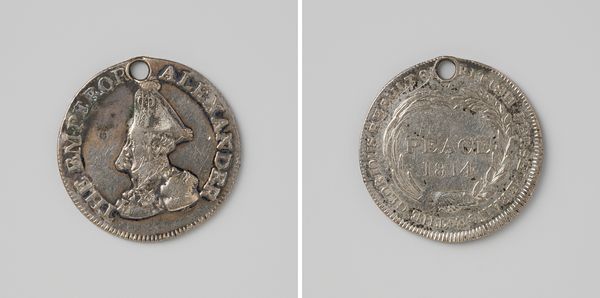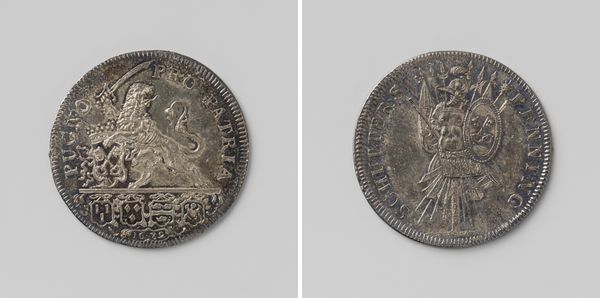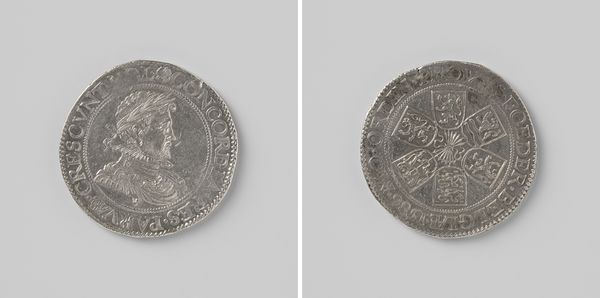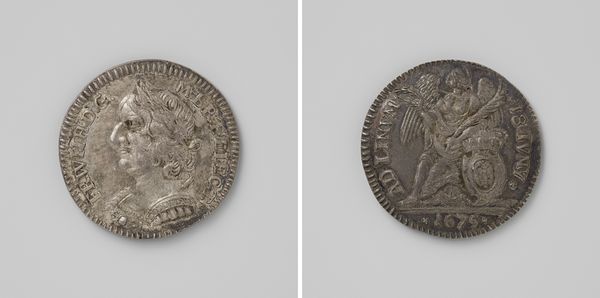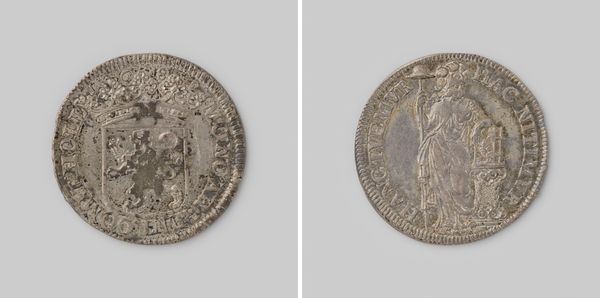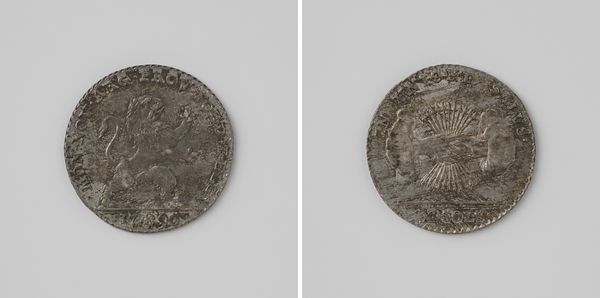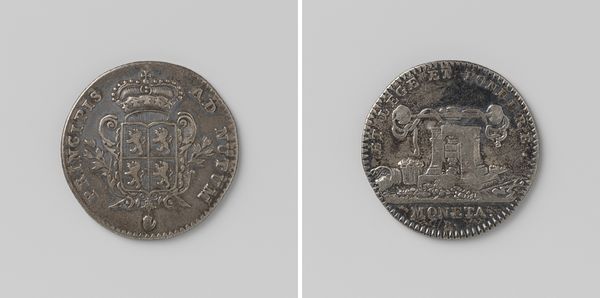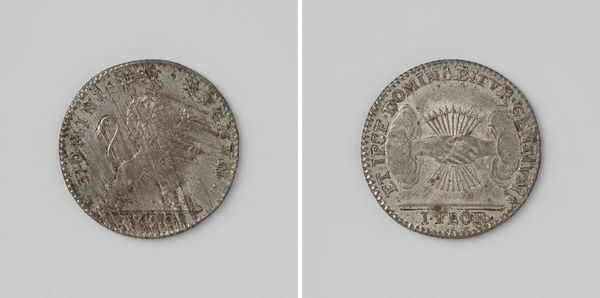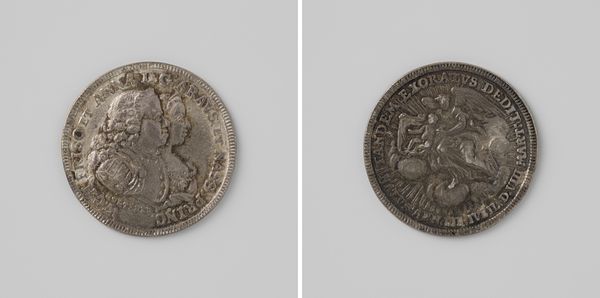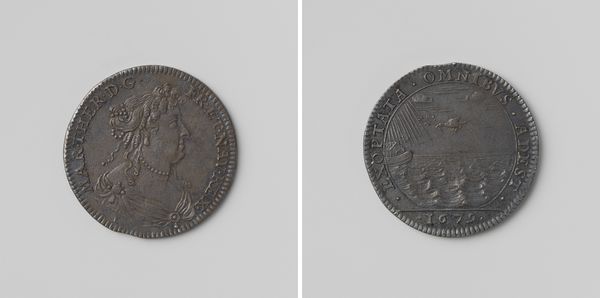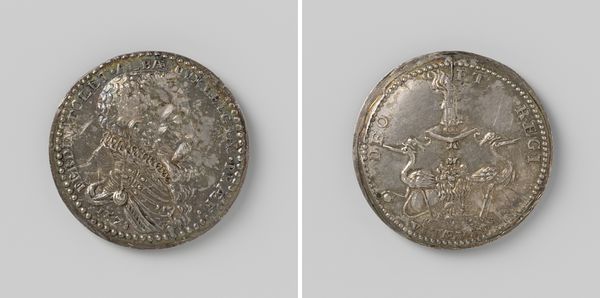
print, metal, relief, engraving
#
portrait
#
neoclacissism
# print
#
metal
#
relief
#
history-painting
#
engraving
Dimensions: diameter 2.6 cm, weight 4.70 gr
Copyright: Rijks Museum: Open Domain
This is a silver coin, a ‘tien stuiver,’ made during a time of crisis in the United Belgian States, around 1790. Its creation speaks to an urgent need, a ‘noodmunt’ or emergency coinage produced by Theodorus Victor van Berckel. The coin’s small size belies its significance. Struck from silver, likely melted down from existing objects, it was die-stamped using hardened metal tools. This process leaves a crisp, raised design: a heraldic lion on one side, and clasped hands beneath radiant light on the other, symbols of unity and hope. The act of minting, usually a carefully controlled state function, became decentralized, responding to immediate economic pressures. In its very materiality, it is more than just currency; it's a tangible record of social and political upheaval. Looking closely, you’ll see slight imperfections, perhaps a testament to the speed and circumstances of its production. It serves as a reminder that even the smallest objects can tell big stories about labor, politics, and consumption.
Comments
No comments
Be the first to comment and join the conversation on the ultimate creative platform.
